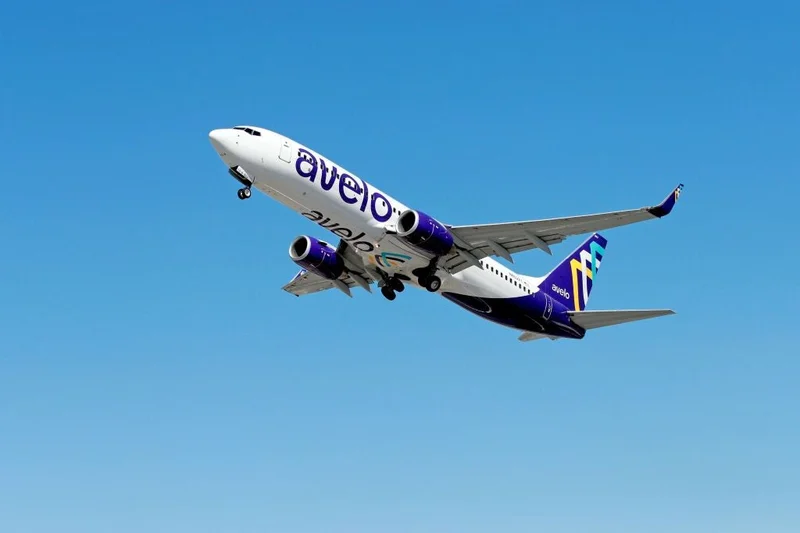Avelo Airlines is expanding its route network in Spring 2026, adding three new routes and reviving three others. The question, as always, is whether this is a strategic move or just... well, let's just say airline route maps sometimes look like a toddler attacked them with a crayon.
Digging Into the Data: Route Specifics
The new routes include Lakeland, Florida to Detroit; Charlotte, North Carolina to Chicago O’Hare; and Wilmington, Delaware to Chicago O’Hare. The returning routes are Lakeland, Florida to Atlanta; Charlotte, North Carolina to Nashville, Tennessee; and Wilmington, Delaware to Atlanta. Service starts between February 11 and 13, 2026. All routes will be flown with Boeing 737s. Avelo is also adding a second aircraft to its Lakeland base next February.
Let's break down what we know. Avelo is focusing on point-to-point routes, avoiding major hub congestion. They're betting on underserved markets. But are these markets really underserved, or just unprofitable for larger carriers? That's the million-dollar question (or, more accurately, the multi-million dollar question, given airline operating costs).
Andrew Levy, Avelo's founder and CEO, claims these new routes offer travelers more choices and affordable travel. It's the standard PR spiel, of course. Every airline CEO says the same thing when announcing new routes. The real question is whether the demand exists to fill those 737s at fares that actually make money. It's not enough to offer cheaper tickets; you need enough people willing to buy them.
East Coast Focus: A Strategic Shift?
Avelo's strategic shift is interesting. They've pulled back from the West Coast (a detail often glossed over in press releases) and are doubling down on the Northeast, Midwest, and South. This suggests a few possibilities. First, the West Coast market might have been too competitive, or perhaps Avelo's business model simply didn't resonate there. (Or, maybe, and this is just a personal aside, they realized flying to smaller West Coast airports wasn't as glamorous as it sounded.) Second, these eastern markets might offer better opportunities for their specific niche: budget-conscious travelers seeking direct flights.
The concentration in Wilmington, Delaware, is particularly noteworthy. Three of the six routes either originate or terminate there. Is Wilmington becoming a de facto Avelo hub? It's possible, but it also carries risk. Over-reliance on a single airport can be disastrous if something goes wrong – weather, economic downturn, or even just a shift in local travel patterns.

The decision to use Boeing 737 aircraft across all six connections is a detail that shouldn't be overlooked. It points to operational efficiency. Standardizing the fleet reduces maintenance costs, simplifies crew training, and allows for greater flexibility in aircraft deployment. However, the 737 isn't exactly a fuel-sipping marvel. Are they banking on lower airport fees at these smaller locations to offset fuel costs?
What I find genuinely puzzling is why Avelo is choosing to bring back routes they previously discontinued. What has changed in the market dynamics to make these routes viable now when they weren't before? Did they misjudge demand initially? Or are they hoping that increased brand recognition and a larger customer base will make the difference?
The addition of a second aircraft to the Lakeland base is a clear sign of commitment to that market. But is Lakeland large enough to support two dedicated aircraft? The population of Lakeland is only about 120,000 people. (To be more exact, the 2023 estimate is 118,174.) Avelo is betting that Lakeland residents are eager to fly direct to Atlanta and Detroit, and that passengers from surrounding areas will be drawn in by lower fares. It's a gamble, no doubt.
Is This More Than Just a Hunch?
Avelo's route expansion might appear random, but there's likely a method to the madness. Or, at least, some kind of rationale. The focus on underserved markets, the standardization of the fleet, and the concentration in specific locations all suggest a calculated strategy. However, the airline industry is notoriously unpredictable. The best-laid plans can be derailed by fluctuating fuel prices, economic downturns, or even just a viral tweet about a bad travel experience. According to Avelo Adds Three New Routes, Brings Back Three Others - AirlineGeeks.com, these routes are part of Avelo's broader strategy to capture underserved markets.
My analysis suggests that Avelo's success hinges on a few key factors. First, they need to accurately assess demand in these smaller markets. Second, they need to maintain their low-cost structure without sacrificing customer service. (A difficult balancing act, to say the least.) And third, they need to avoid over-expansion, which has been the downfall of many budget airlines in the past.
A Risky Roll of the Dice
Whether Avelo's expansion is a calculated gamble or just throwing darts remains to be seen. The data is intriguing, but the airline industry is a beast of its own. One thing is for certain: it's going to be an interesting couple of years for Avelo, and for the travelers who are willing to take a chance on a smaller airline.
